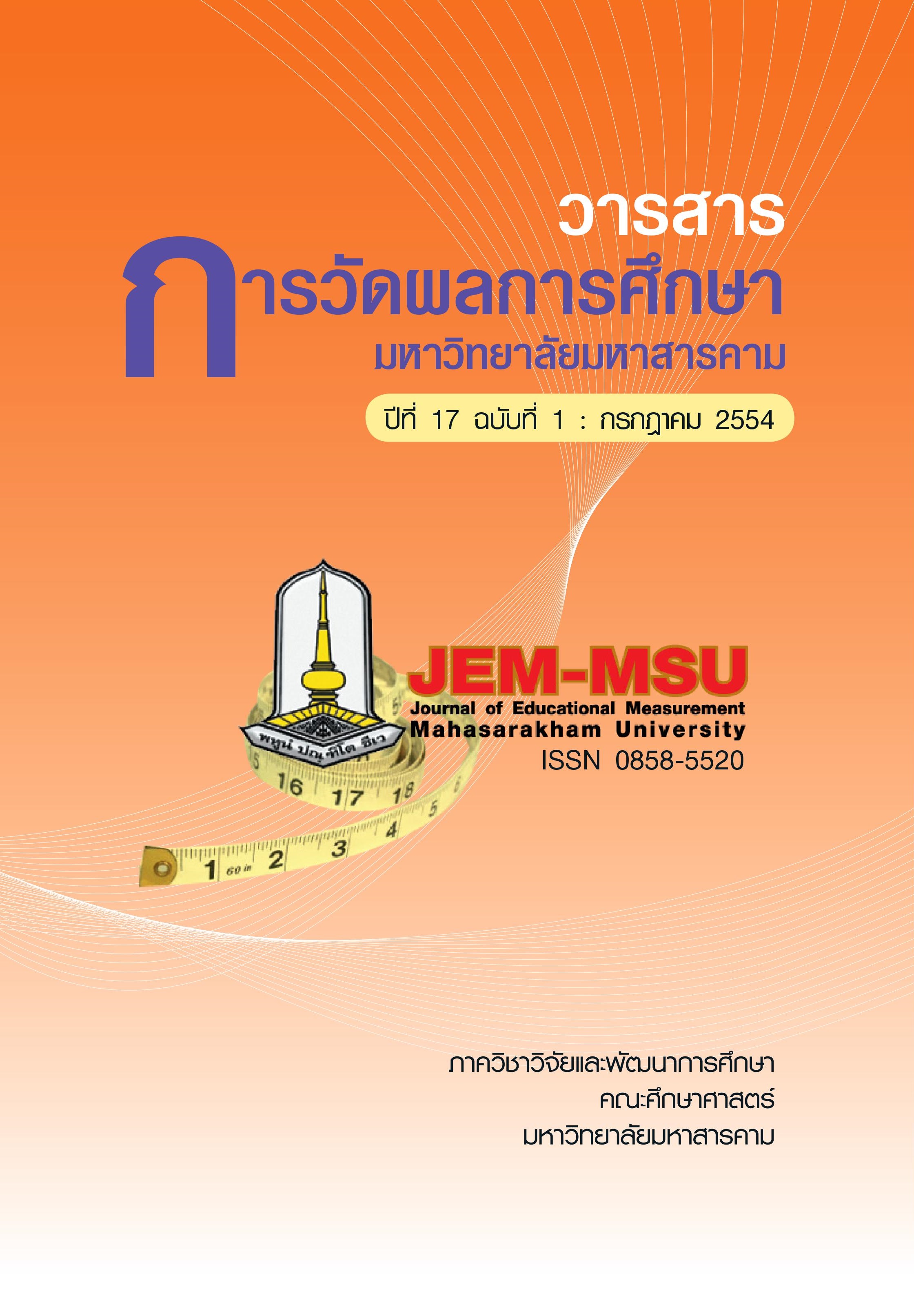A COMPARISON OF ERROR RATES AND DETECTING POWERS BETWEEN FOUR ANSWER COPYING METHODS FOR MULTIPLE-CHOICE TESTS
Main Article Content
Abstract
The purpose of this research were to study and compare error rates and detecting
powers of answer copying methods for multiple-choice tests between four methods which
were B-index, PAIR1, PAIR2, and g
2
-index ; under various conditions on the number of
examinees, the number of tests copied, and the number of copiers. The data used in this
study were collected from 1,500 Mathayomsuksa 3 students in schools under Phayao
Educational Service Center 1. A mathematics achievement test was used as a tool to collect
data under a normal and a strict situation in the test administered from 750 students in each
situation. Data acquired from the strict situation were used as the simulated data for varying
study conditions with 2 sets for number of examinees, 4 sets for number of tests copied, and
2 sets for number of copiers. The INTEGRITY computer program was employed in the analysis
processes.
The results of the research revealed that ;
1. The error rates of four detecting methods for answer copying on multiple-choice
tests were as follows :
In realistic testing situations, the error rate of the PAIR2 method was highest and the
error rate of the B-index method was lowest for all critical points (low, moderate and high).
The error rates of the PAIR1 method and the g
2
-index method were between those of PAIR2
and B-index methods where the error rate of the PAIR1 method is higher than the g
2
-index
method at low and moderate critical points while the error rate of the g
2
-index method is
higher than that of PAIR1 at the high critical point.
In simulated testing situations, the error rate of the B-index method was highest while
PAIR1, PAIR2, and g
2
-index methods did not have any errors on detecting of answer copying.
The detecting powers of four methods for answer copying on multiple-choice tests were as
follows :
In realistic testing situations, the best detecting power was found in the PAIR2 method,
followed by the g
2
-index, PAIR1, and B-index methods respectively.
In simulated testing situations, the number of examinees, the number of tests copied,
and the number of copiers did not affect the detecting power of all four methods.
Article Details
The content and information contained in the published article in the Journal of Educational Measurement Mahasarakham University represent the opinions and responsibilities of the authors directly. The editorial board of the journal is not necessarily in agreement with or responsible for any of the content.
The articles, data, content, images, etc. that have been published in the Journal of Educational Measurement Mahasarakham University are copyrighted by the journal. If any individual or organization wishes to reproduce or perform any actions involving the entirety or any part of the content, they must obtain written permission from the Journal of Educational Measurement Mahasarakham University.


